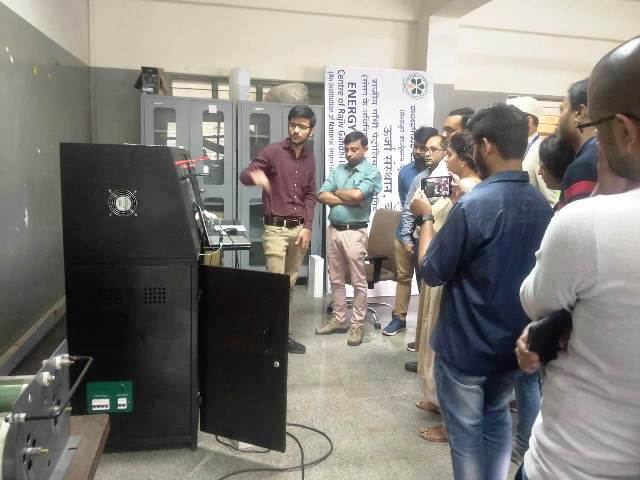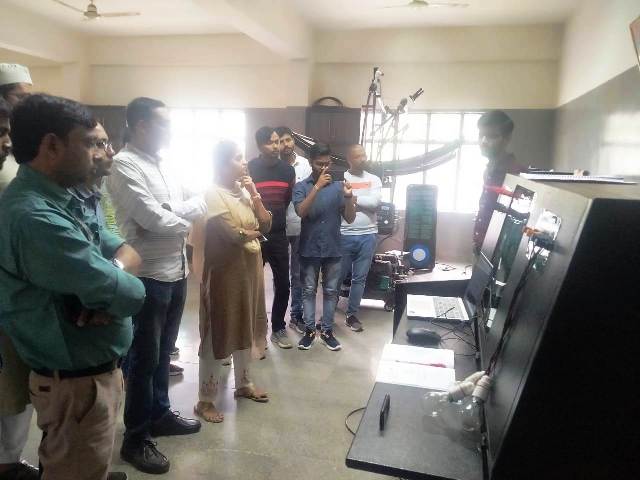6. ETC Characterisation System
An ETC
characterization system for thermal analysis of fluids is a mini closed-loop
Evacuated Tube Collector system to study the thermal characteristics of various
fluids. The system uses an artificial sunlight source to illuminate evacuated
tube collector so that it can be used inside a lab and is independent of the
natural climate. The system includes header storage tank, ETC tubes and a pump
which make it suitable for the system analysis and evaluation of thermal
characteristics. Different sensors such as pressure, temperature, flow etc. at
different branches of system is used to collect data and then can be used in
calculation for evaluating different parameters. A chiller is connected to the
system to cool down the hot fluid immediately and study the thermal
characteristics of heating as well as cooling.
7. Thermal
Energy Storage
This system
has been designed to perform TES related experiment by using PCM materials. As
there are several types of PCM, the system has been designed to perform
experiment with at least two PCM separately. Provision is also kept to examine
the combine (known as cascading) effect of two PCMs in thermal energy storage.
To visualize the phase changes in the material another set of arrangement are
there in the system.
8. Wind
Turbine Emulator
Wind turbine
emulator mimics the behaviour of wind turbine for hardware level simulations.
This system has a DC motor coupled with the Induction generator/Permanent
Magnet Synchronous Generator, speed of which is controlled as per the speed
reference calculated by solving the mathematical model of wind turbine. An
induction generator is coupled to the DC motor and bidirectional inverter is
connected to the terminals of the generator. Researcher can execute the
mathematical models of their newly developed or modified wind turbine and can
simulate the speed/power of profile of turbine on hardware environment directly
for different wind speeds & pitch angle.
9. Fuel Cell
Training System
Fuel
Cell unit receives dry hydrogen from the Hydrogen gas cylinder at preset LPM.
The generated power can be used directly by a DC load but as per the V-I curve
of Fuel cell system, the voltage reduces as we increase the load, therefore,
the power generated by fuel cell system cannot be used directly hence the
output is connected to a charge controller which charges the battery and
maintain output as per the battery voltage. The battery bank is further
connected to a home inverter so that home utilities can be used as a load for
the fuel cell system.
By
using the Fuel Cell training system, a user will be able to understand
characteristics of fuel cell with the help of resistive load or DC-DC
converter, output power variation of fuel cell with change in hydrogen supply,
fuel cell performance with DC/AC load and output variation of fuel cell with a
change in temperature.


